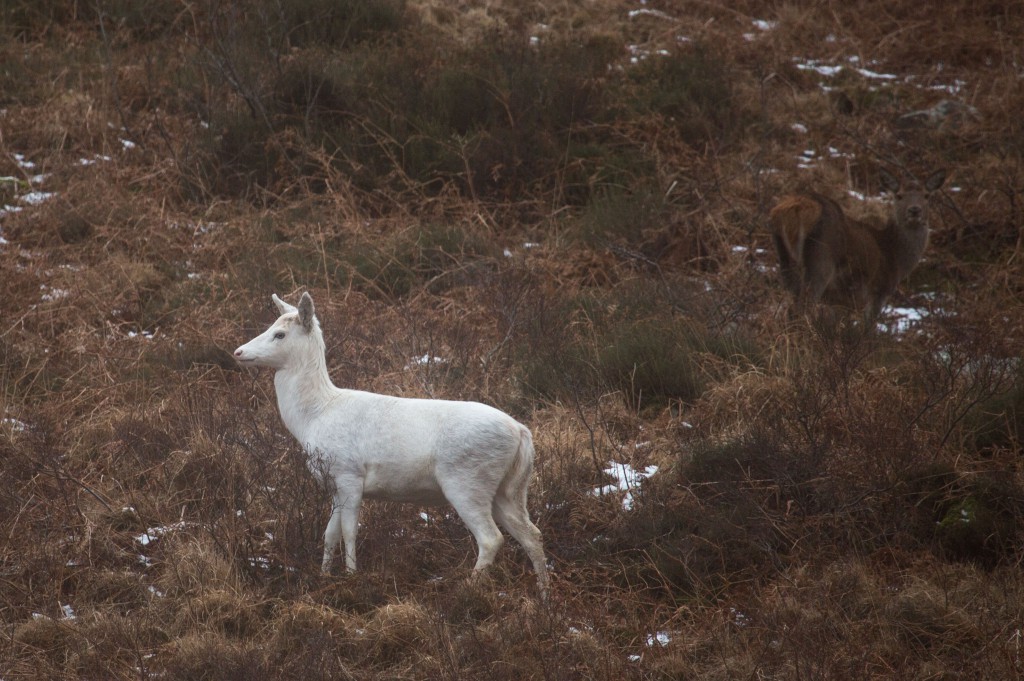MARKSMEN on a Scottish island have agreed to spare a stunning and very rare white hind from the deer cull.
The red deer – which is snow-white and has blue eyes – lives in the south-west of Arran and was captured on camera earlier this year by local photographer Jackie Newman.
It is currently open season for shooting hinds on Arran but the white deer is considered so special she is the subject of a “gentlemen’s agreement” not to kill her.
As well as destroying a rare and beautiful animal, locals fear that shooting the two-year-old would harm tourism as many visitors to the island hope to catch a glimpse of her.
White deer have been living in the glens of Arran for many years and are thought to be the result of a rare genetic strain.
Jackie was astonished to spot the white hind in January this year while she was out walking.

“I was amazed at how white she is and at the blue eyes. To get the pictures and I had to keep very quiet and avoid eye contact.”
She added: “It is the stalking season. I know a few gamekeepers and they have a gentlemen’s agreement that she is off-limits.
“She’s good for tourism. People come hoping to see her. I believe she was glimpsed again in May and by a gamekeeper last month.”
Robert Logan, 60, who works for the Forestry Commission to control deer numbers on Arran, confirmed: “There are around 120 deer culled per year, but the white hind would not be involved.
“There is no reason to shoot that deer. Every individual stalker is told they are not to shoot it.”
He added: “There is a local interest in the white hind. Residents see red deer regularly but seeing a white hind is something special.
Mr Logan is convinced there are two white hinds on the island. He believes the other deer is living on the east side of Arran between Brodick and Lamlash.
Mr Logan, who himself captured a picture of the “west coast” white hind when she was aged about one, said: “They’re about ten kilometres from one another. The younger one is a woodland-orientated deer. I saw it at last light on Wednesday.”
White red deer are the result of a rare genetic mutation resulting in a condition called leucism which changes the animal’s pigmentation.
“If it has young it will pass on the genetics but it won’t necessarily manifest itself. A white hind can come from two brown deer,” said Mr Logan.
He added: “The only time a white hind may be shot is for humane reasons when it becomes elderly and struggles to survive.”

